Agriculture is the mainstay of the Maharashtra state. Agriculture is the main occupation of the Maharashtra people. About 82% of the rural population is dependent on agriculture. The major food crops of Maharashtra are Mango, Grape, Banana, Orange, Wheat, Rice, Jowar, Bajra, and Pulses. Cash crops include Peanuts, Cotton, Sugarcane, Turmeric, and Tobacco. Let’s check out more information on district wise crop Production in Maharashtra
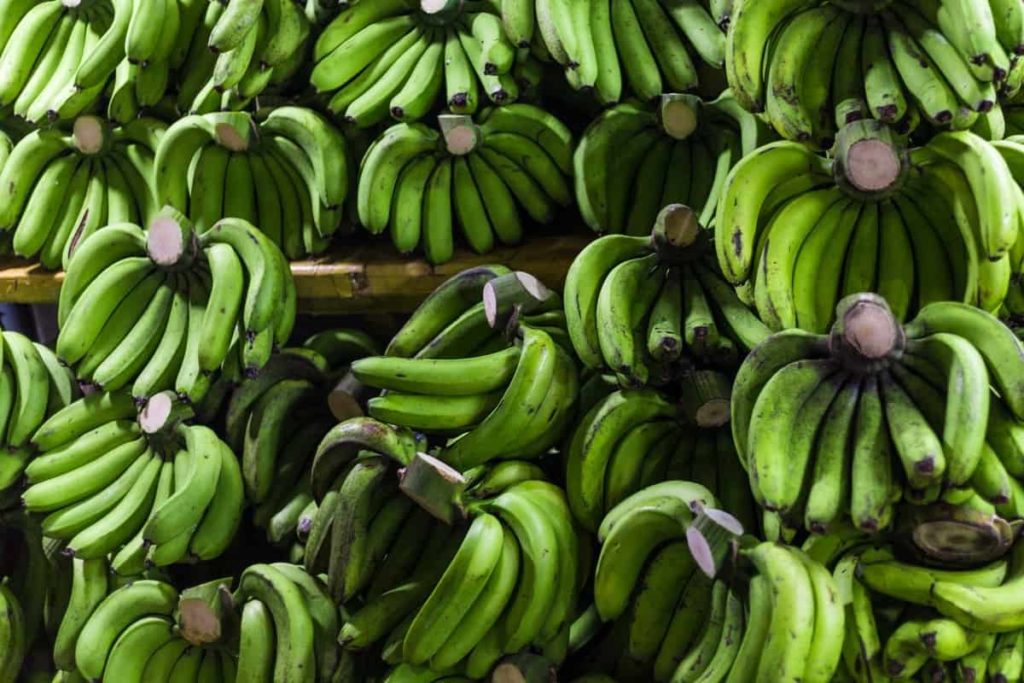
Maharashtra is the first state to adopt ‘dryland farming technology’ with a mission to help its farmers. Farmers are being trained on new techniques of farming, pond irrigation, micro-irrigation, intercropping, double cropping, etc., besides providing them with better short duration yield seeds, fertilizers, pesticides, etc. It is evident to the farmers from the high yield of agricultural universities.
The major traditional flowers grown in Maharashtra are Rose, Chrysanthemum, Marigold, Jasmine, and Tuber Rose. Zinnia, Lily, Gerberas, and Carnation are grown in non-traditional flowers. Maharashtra has emerged as a leading state in flower production, export, and use in the country. There are a total of 36 districts in the Indian state of Maharashtra.
District wise Crop production in maharashtra:
Ahmednagar
Ahmednagar District is located in the central part of the state of Maharashtra, which shares borders with seven adjoining districts. The major crops grown in the Ahmednagar district are Bajra, Rice, Pearl Millet, Red gram, Soya Bean, Cotton, Wheat, Jowar, Maize, Vegetables, Pulses, Fodder Crops, Oilseeds, Sugarcane and Fruits were cultivated in the district. Jowar is the leading crop in the Ahmednagar district.
Crops occupy a small area but are an important source of livelihood. Maize, Green Gram, Black Gram, Peanuts are the main horticultural crops of Ahmednagar district. The leading horticultural crops are Mango, Lime, Pomegranate, Guava, and Onion while Banana, Custard Apple, Ginger, and Turmeric crops are some prominent crops that have registered a phenomenal rise in the area
- Field crops – Wheat, Sugarcane, Pearl Millet, Chickpea, Soybean
- Fruits – Pomegranate, Paper Lime, Guava, Mango, Sapota
- Vegetables – Onion, Tomato, Pea, Eggplant, Chilli
Akola
In Maharashtra, the Akola district is having a predominantly agriculture-based economy. The geographical area of the district is 5.43 lakh hectares. Net irrigated area is 5.24% of net irrigated area. Cotton, Jowar, Soybean, Tur, and other pulses are the major Kharif crops of the district, while Wheat and Gram are the major rabi crops.
The policy emphasizes the importance of micro-irrigation in providing subsidies on micro-irrigation equipment, dissemination of need-based technologies, and demonstrating it at the grassroots level to increase the productivity of the crop.
Organic farming has been gaining importance in recent years, which also finds a place in the project, which certainly helps maintain soil health. The plan focuses on popularizing organic farming and providing technical information to farmers on how to export it. Processing of fruit crops has been given importance, especially to Orange, Lime, and Aonla crops.
- Field crops – Cotton, Soyabean, Wheat, Jowar, Safflower, Green Gram, Black Gram, Pigeon pea
- Fruits – Mango, Sapota, Orange (Santra), Sweet Orange
- Vegetables – Tomato, Brinjal, Cabbage, Cauliflower, Cluster Bean, Okra, Spinach, Fenugreek, Rigged Gourd, Cucumber, Bitter Gourd, Onion
In case you miss this: District Wise Crop Production in Gujarat: Major Crops in Gujarat
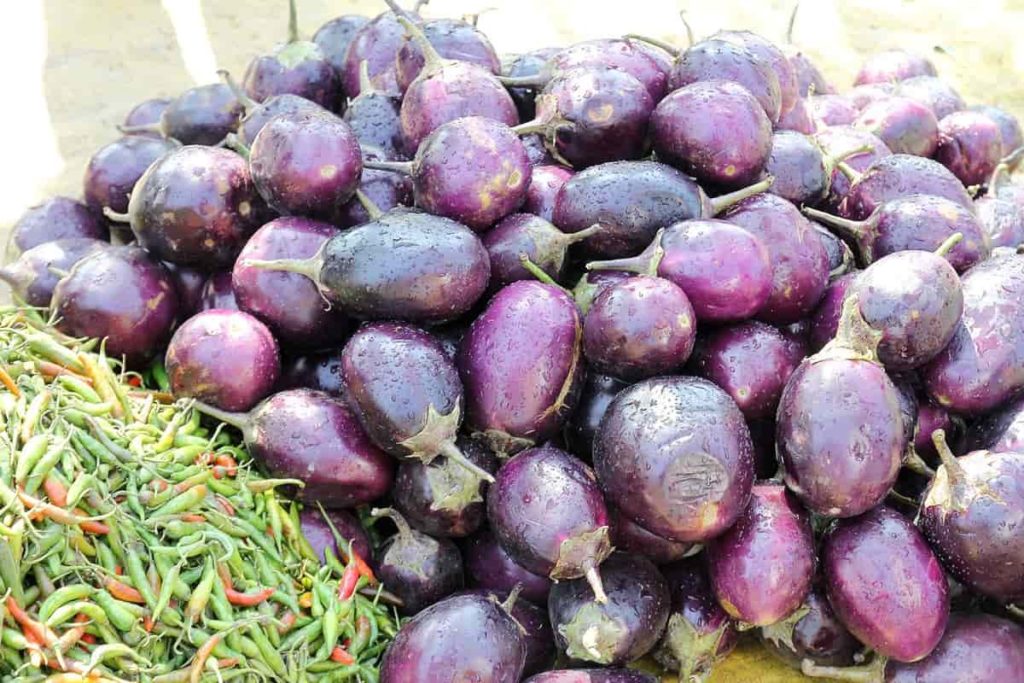
Amravati
The diversification of commercial crops over the food crop took place in selected tehsils of the Amaravati district.
- Field crops – Soybean, Cotton, Pigeon pea, Sorghum, Green gram, Chickpea, Wheat
- Fruits – Santra, Mango, Mosambi, Kagzi lime, Ber, Banana, Guava, Aonla, Pomegranate, Custard apple, Sapota, Tamarind, Papaya
- Vegetables – Tomato, Brinjal, Cabbage, Cauliflower, Cluster bean, Dolichos bean, Lady’s finger, Spinach, Fenugreek, Ridge gourd, Cucumber, Bitter gourd, Onion
Aurangabad
Agriculture is diverse in Aurangabad district; a wide range of crops are cultivated in the district. The main food grains are Jowar, Pearl Millet, Wheat, and Gram, Soybean is the major crop in Oilseeds while Cotton is the major cash crop. The major crops of the Kharif season – Cotton, Millet, and Maize and the rabi season crops – are Jowar, Wheat, and Gram. The total area under cultivation is 8.52 lakh hectares and the net sowing area is 7.15 lakh hectares.
Beed
Soybean, Pigeon Pea, Pearl Millet, Maize (Grain), Black Gram (Pulses), Sorghum, Ground Nut, Sunflower (Oilseeds), and Cotton, Sugarcane (Cash) are the major crops grown in Beed district during Kharif season.
- Field crops – Pearlmillet, Cotton, Sorghum, Pigeonpea, Soybean, Wheat, Gram, Safflower, Sunflower, Sugarcane
- Fruits – Mango, Sweet orange, Lemon, Sapota, Guava, Grape, Banana, Custard apple
- Vegetables – Brinjal, Tomato, Okra (Bhendi), Cabbage, Cauliflower, Onion
- Aromatic crops – Chilli, Ginger, Garlic
Bhandara
- Field crops – Paddy, Soybean, Pigeonpea, Wheat, Gram, Summer groundnut
- Fruits – Mango, Chikoo, Citrus, Guava
- Vegetables – Brinjal, Tomato, Chilli, Okra, Leafy vegetables
Buldhana
Agriculture is the most important activity of the district in which Bajra, Jowar, Wheat, and Pulses are the major food crops. Other crops grown include short-term crops such as Cotton, Soybeans, Sugarcane, and Bananas, as well as Peanuts, Sunflowers, and Vegetables.
In the recent past, Maize and Potato cultivation has taken up space. 37% of the land is classified as small and scattered land ownership and this has affected crop patterns as small farmers prefer food crops over cash crops. Coverage of horticultural crops is limited and is expected to accelerate as the program is under the auspices of the National Horticulture Mission.
The district has the potential for the development of agricultural activities, forest-based units, and artisan units. The most common fruits grown in this district are Banana, Mango, Guava, Citrus, Orange, and Lime; Grapes, Custard Apple (Sitaphal), Papaya, Pomegranate, etc. The main vegetables of this district are Onion, Eggplant, Sweet potatoes, Cabbage, Tomatoes, Okra, Carrots, Radishes, Fenugreek, Spinach, other vegetables.
Chandrapur
Chandrapur is considered the rice bowl of the state. The major crops grown in the district are Paddy, Cotton, Soybean, Jowar, and Pulses in Kharif and Wheat, Gram, Pulses, Linseed, and Chillies in Rabi season. Agriculture in the district is largely dependent on the monsoon. It provides a source of livelihood to a large portion of the working population. Chandrapur district has the enviable position of being a food surplus area.
- Field crops – Oilseeds, Cereals, Cotton, Pulses
- Fruits – Mango, Chiku, Guava, Custard Apple, Jamun
- Vegetables – Chilli, Turmeric, Brinjal, Tomato, Onion, Cauliflower, Cabbage, Radish
Dhule
The major crops grown in the Dhule district are Cotton, Bajra, Jowar, Groundnut, Maize, and Soybean. Paddy is cultivated on the western side of Sakri taluka in the district. Wheat and Gram are harvested in the Rabi season.
The main occupation of the Dhule district is agriculture. Jowar, Bajra, Maize, Groundnut, Greens, Black Gram, Red Gram are the major crops of Kharif. Wheat and Gram are Rabi crops. Banana, Pomegranate, Berry, Papaya, Lemon are the main fruit crops of the district. Onion, Eggplant, Chilli, Okra are the main vegetable crops. Paddy is cultivated on the western side of Sakri taluka in the district. Wheat and Gram are harvested in the Rabi season. In addition, cash crops like Sugarcane, Banana, Chilli, and Cotton are being harvested.
Gadchiroli
The soil is clay soil, sandy loam, deep black soil, reddish- and yellowish-brown soil. The main crops are Paddy, Soybean, Cotton, Jowar, Pulses, Oilseeds, etc. The majority of the rural population is directly or indirectly dependent on agriculture, agro-industries, and industries. Paddy is the main agricultural product of the Gadchiroli. Other agricultural products in the district are Jowar, Linseed, Tur, and Wheat.
- Field crops – Paddy, Pigeon pea, Soybean, Maize, Sorghum, Wheat, Gram, Rabi sorghum, Linseed
- Fruits – Mango, Cashew nut, Sapota
- Vegetables – Chili, Turmeric, Onion, Brinjal, Tomato
Gondia
- Field crops – Paddy, Pigeon pea, Sesame, Wheat, Gram
- Fruits – Mango, Banana, Chickoo, Ber, Custard apple, Aonla
- Vegetables – Chilly, Brinjal, Peas, Tomato, Gourds, Cucumber, Sweet Potato, etc.
In case you miss this: District Wise Crop Production in Kerala: Major Crops in Kerala
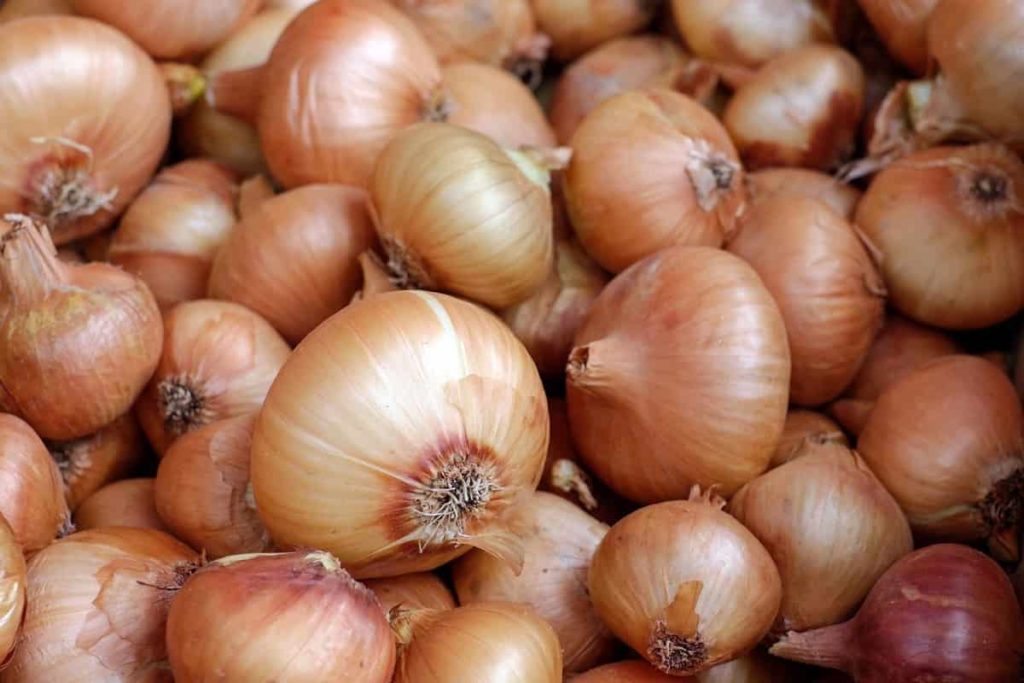
Hingoli
The main crops grown in the Hingoli district are Soybean and Cotton. Soybeans are grown on 6% of the total area and cotton on 5% of the area. Sorghum, Gram, Rice, Sunflower is also grown here.
- Field crops – Soybean, Cotton, Sorghum, Pigeon pea, Green Gram, Black gram, Wheat, Gram, Safflower, Sunflower, Groundnut, Sugarcane
- Fruits – Banana, Orange (Santra), Sweet Orange (Mosambi), Mango, Papaya, Anola
- Vegetables – Tomato, Brinjal, Okra (Bhendi), Chilli
Jalgaon
Jalgaon is rich in volcanic soil which is suitable for cotton production. It is a major trading center for Tea, Pulses, Cotton, and Bananas. Cotton, Soybean, Maize, Jowar, Wheat, Pulses, Peanuts are the major crops of the Jalgaon district. During the Rabi season, farmers harvest Wheat, Gram, Soybean, and Maize in large quantities, and summer crops are grown in very small areas.
Today, Jalgaon district is known as the state’s Cotton and Banana bowl, as the area under Cotton is less than 400,000 hectares and 48,000 hectares area is under the Banana crop. These two crops are important cash crops that generate huge labor potential. Maize and Pomegranate is the most valuable crop.
Custard apple and Lemon and another important crop of the district are Eggplant and the average vegetable crop of the district. With the increase in irrigated areas, the area under Rabi is increasing. In recent years, the area under Cotton, Maize, Soybean has increased and the area under Cereals, Desi Cotton, Sunflower and Sesame has decreased. Wheat and Gram crop area have increased due to the availability of irrigation.
Jalna
The economy of the Jalna district is mainly agricultural. The district produces Sorghum, Millet, Maize, Cotton, Groundnut, Tur, Urad, and Soybean in Kharif season, while major crops like Millet, Wheat, Sugarcane, Groundnut, and Sunflower are cultivated in Rabi season.
Kolhapur
Rice and Sugarcane are the major crops grown extensively in the region. Kolhapur district has been producing Sugarcane and jaggery for a long time. Some orchards of Banana and Guava are mainly seen in the eastern part. A few permanent Mango and Cashew nuts can also be seen.
In addition to the local varieties grown, a few foreign varieties, namely, Cabbage, Cabbage, Lettuce have also been introduced and have become very popular in the district, especially in Karvir, Radhanagari, and some parts of Shahwadi Taluka.
Latur
The economy of the Latur district is mainly agricultural. The major crops of Kharif are Soybean, Tur, Urad, Groundnut, Maize, and Millet, while Gram is the main crop of Rabi season. Sugarcane, Groundnut, and Saffron are other crops grown in the district. Latur farmers grow Papaya, Pomegranate, Pepper, Custard Apple, and other such crops which require very little water.
Mumbai City
The main crops grown in Mumbai city are Rice, Jowar, Mung, Wheat, Tur, Groundnut, Urad, Gram, and other pulses. It is a major producer of oilseeds. Peanuts, Sunflowers, and Soybeans are important oilseed crops. The major cash crops grown are Cotton, Sugarcane, Turmeric, and vegetables.
Mumbai Suburban
Rice, Fruits and Vegetables, and Coconuts are grown in Greater Bombay.
Nagpur
The major crops grown in Nagpur are Sugarcane, Wheat, Soybean, Pulses, Groundnut, Wheat, Gram, Jowar, Bajra, Linseed, Cotton, Groundnut, Sunflower, Tur, and others. Soybean is considered to be the most important cash crop of Nagpur.
Nanded
About 65% of Nanded’s total land area is used for food production. Because agriculture is a seasonal occupation, those who depend on it do not get full-time employment. The reason for this seasonal nature of agriculture in the district can be attributed to the dependence of agriculture on monsoon and inadequate irrigation facilities. Crops grown during the monsoon are Kharif crops and include grains such as Wheat, Maize, Sorghum, Gram, Paddy, Peanuts, etc., while the late monsoon crops are rabi crops are which consist of Jowar, Gram, Wheat, Oilseeds, etc.
The district falls under the rainfed crop. The major crops of the district are Cereals (Jowar, Wheat, Maize), Pulses (Black Gram, Green Gram, Red Gram, Chickpea), Oilseeds (Soybean, Peanut, Saffron, Sunflower).
In case you miss this: District Wise Crop Production in Karnataka: List of Crops Grown in Karnataka
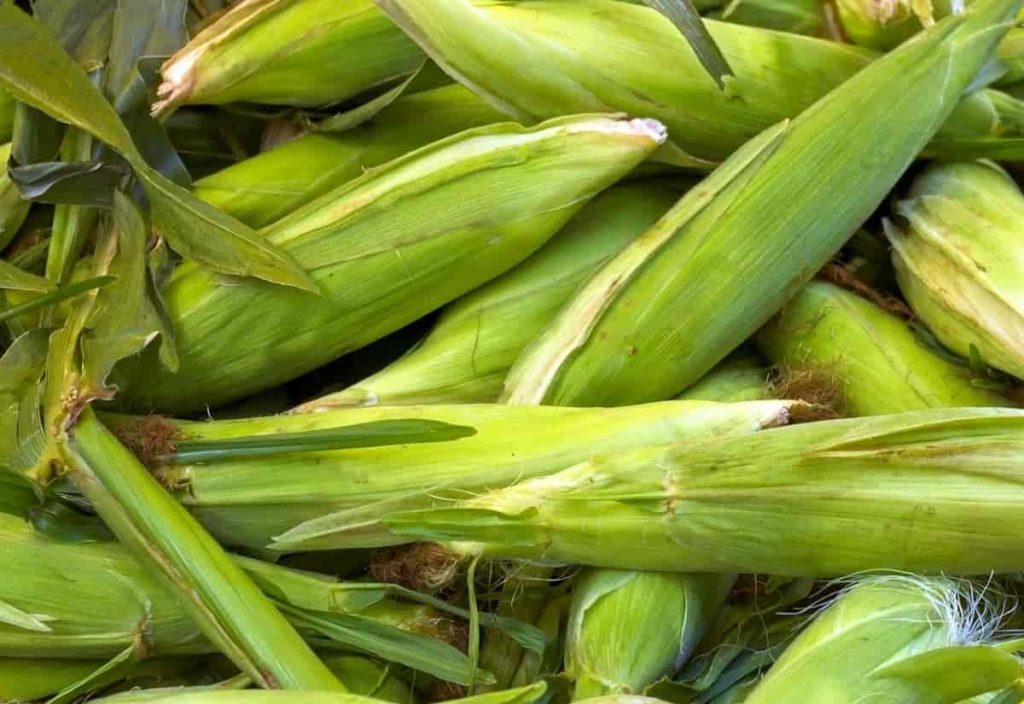
Fruit crops (Mosambi, Sapota, Mango, Guava, Anola), Vegetables (Tomato, Eggplant, Cabbage, Chilies, Coriander, etc.) and Flowers (Chrysanthemum, Rose, Jasmine, Gerberas, etc.). The district’s export zone falls under Mango and Mosambi, so a large area falls under horticulture crops such as Mango, Mosambi, Cashew, Tamarind, and Aonla.
Nandurbar
Onions and Garlic are important commercial crops that can improve the livelihood of farmers. They also play an important role in the food and nutrition security of the tribes. The Nandurbar tribal belt in Maharashtra has favorable climatic conditions for commercial Onion and Garlic production.
Nashik
The main vegetables grown in Nashik district are Onion, Brinjal, Fenugreek, Okra, Carrot, Sweet Potato, Potato, Cabbage, Tomato, Radish, etc. Among Cereals, Bajra and Rice are ranked first and second respectively. Vegetables, Grapes are the main cash crop of the district.
Osmanabad
The main occupation of the majority of the population of Osmanabad district is agriculture. The major crops are Jowar, Sunflower, Gram, Sugarcane, Tur, etc. In addition to Grain and Oilseed crops, there are two commercial crops, viz. Sugarcane and cotton were cultivated in the district which constitutes 6.73% of the Kharif area.
Palghar
The major crops grown in the Palghar area are Paddy, Finger Millet, Common Millet, Pigeon Pea, and Black Gram. Horticulture is an important source of income for farmers in the Palghar district. Pepper and Cucumbers are the main crops grown in the district, especially Ridge Gourd, Smooth Gourd, traditionally grown by farmers. The main Fruits grown in this area are Mango, Coconut, Sapota.
Parbhani
The crops are cultivated in the Parbhani district during Kharif and Rabi seasons.
- Major Field crops – Cotton, Sorghum, Soybean, Green gram, Black gram, Pigeon pea, Wheat, Gram, Safflower, Sunflower, Groundnut, Sugarcane
- Fruits -Mango, Sweet orange, Orange, Sapota, Lime
- Vegetables – Brinjal, Tomato, Onion, Okra, Cauliflower
- Medicinal and Aromatic crops – Chilli, Turmeric, Ginger, Garlic
Pune
The major crops grown in Pune are Rice, Jowar, Tur, Wheat, Tur, Groundnut, Urad, Gram, and other pulses. This is a major producer of Oilseeds. The horticulture sector has developed rapidly, and the major horticultural crops are Grapes, Bananas, Mangoes, Oranges, Onions, and other aromatic and medicinal plants. Peanuts, Sunflower, Soybean Oil Seeds are important crops. The major cash crops are Cotton, Sugarcane, Turmeric, and vegetables.
In case you miss this: District Wise Crop Production in Tamil Nadu
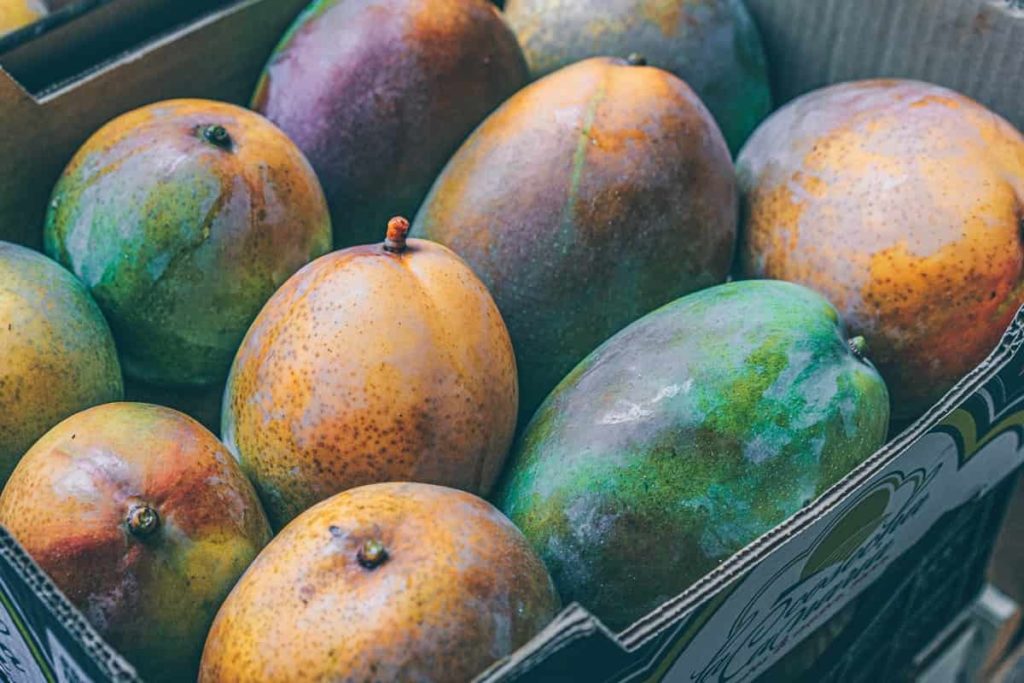
Raigad
The main crops grown in Raigad during Kharif season are Rice, Finger Millet, Small Millet, and in Rabi season Cowpea, Red Gram, Green Gram, Horse Gram. In summer, Peanuts and some vegetables are grown by irrigated farmers.
- Major field crops – Rice, Pulses (Lab Lab Bean, Cowpea, Black Gram, Horse Gram, etc.), Finger Millets, Prosomillet, Groundnut, Mustard and Sesame
- Fruits – Mango, Cashew, Sapota, Other fruit crops
- Vegetables – Chilli, Okra, Brinjal, Leafy vegetables, etc.
- Plantation crops – Coconut, Arecanut
Ratnagiri
In addition, certified seed production and availability at affordable prices are included in the plan. As the district has large areas of marginally fertile lands which are used for millet and horticulture income can also be expected from lands that would otherwise become uncultivable wastelands. In recent years, organic farming has gained prominence, which is also part of the plan, which is sure to help maintain and enhance soil health.
- Field crops – Rice, Finger millet, Prosomillet, Pulses- (Lablab Bean, Pigeon Pea, Cowpea, Black Gram, Horse Gram, etc.), Groundnut
- Fruits – Mango, Cashew, Sapota
- Vegetables – Chilli, Cucurbits, Okra, Brinjal, Leafy vegetables, etc.
- Plantation crops – Coconut, Aracanut
Sangli
The major crops grown are Rice, Millet, Sorghum, Wheat, Peanuts. Cash crops such as Cotton, Sugarcane, Grapes, Tobacco, and Oranges are regionally important.
Satara
Horticulture is an important allied activity in Satara District.
- Vegetables – Onion, Tomato, Potato, Sugar Cane, Eggplant, Cabbage, Cauliflower, Lady Finger, Cluster Beans, Fenugreek, Drumstick, Capsicum, Carrot, Cucumber, etc.
- Fruits – Grape, Banana, Mangoes, Papaya, Guava, Strawberry, etc.
Sindhudurg
The main crops of the Sindhudurg district are Rice, Coconut, Mango, and Cashew. Sindhudurg is also known for tropical fruits like world-famous Alphonso Mangoes, Cashew, Jamuns, etc.
Solapur
Wheat, Jowar, Bajra, Gram, Cotton, Maize, Tur, Gram, Saffron, Sugarcane, Cotton, and Groundnut are the major crops of Solapur district. Sugarcane and Jowar account for more than 50% of the total cultivated area of the region. Both Rabi and Kharif crops can be grown in Jowar in the Solapur district. The National Research Center on Pomegranate of India (NRCP) is located at Solapur. And pomegranate is widely grown in the Solapur district.
In case you miss this: District Wise Crop Production in Telangana
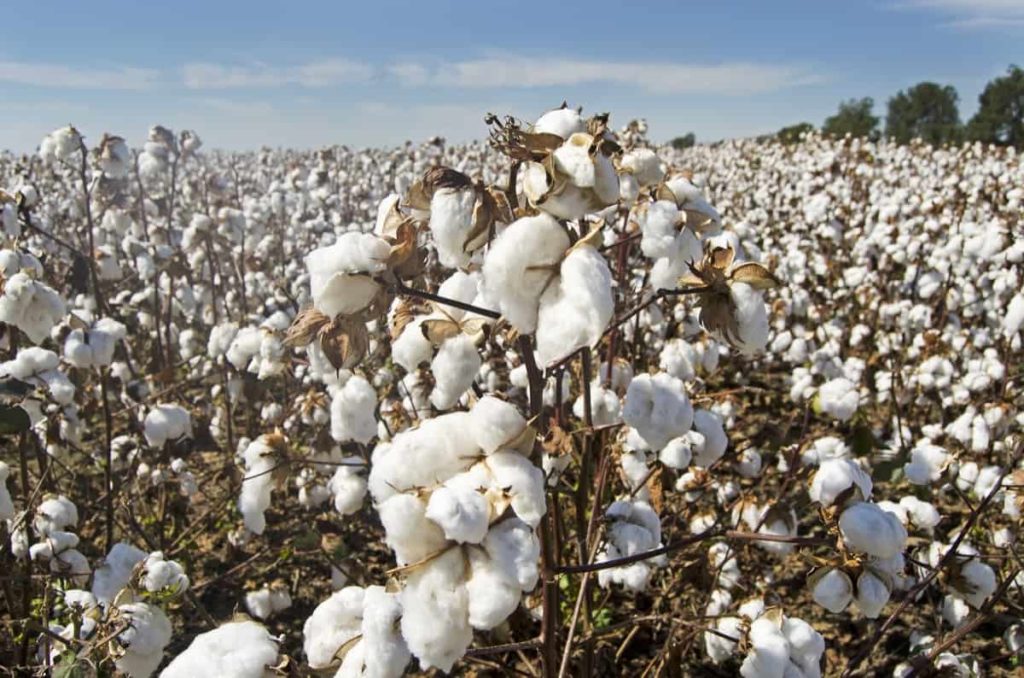
Thane
The main Kharif crops of the Thane district are Rice, Finger Millet. Pulses like Urad, Moong are also grown in this season. Rice is the main crop of the district and it is grown in all the talukas of the district but mainly in Palghar, Bhiwandi, Murbad, Shahapur, Vada, Vikramgad, and Dahanu.
Vegetables are also grown in the district. Eggplants are widely grown in this area. Chikoo (Sapotas) is widely grown in Gholwad. Chikoo orchids are also found in Palghar and Talasari talukas. Chikoo grown in these areas is shipped all over India. Other fruits grown in the district are Guava, Mango, Papaya, Grape, and Coconut.
Warda
The major crops grown in the Kharif season are Cotton, Sorghum, and Pulses. Wardha District has provided rainfed and irrigated horticultural crops such as Mandarin, Sweet Orange, and dryland crops such as Aonla, Pomegranate which are the main crops.
Washim
Washim has a diverse production of fruits and vegetables, including Kagzi Lime Bananas, Papayas, and Mandarins. Farmers are also diverse towards Pomegranate. The horticulture industry generates income through the production of fruits and vegetables and the quality of production. It also creates employment opportunities and increases the food security of farmers in the district. They are very innovative and involved in organic farming.
Yavatmal
Cotton, Soybean, Pigeon Pea, Sorghum, Green Gram, and Black Gram are the major crops grown in the Yavatmal district during the Kharif / rainy season of which Cotton is the major crop. In addition, Wheat and Chickpea are important crops in Rabi/winter season.
- Economical Aquaculture: A Guide to Low-Budget Fish Farming
- 15 Common Planting Errors That Can Doom Your Fruit Trees
- How to Make Houseplants Bushy: Effective Tips and Ideas
- Innovative Strategies for Boosting Coconut Pollination and Yield
- Pollination Strategies for Maximum Pumpkin Yield
- The Complete Guide to Chicken Fattening: Strategies for Maximum Growth
- Natural Solutions for Tulip Problems: 100% Effective Remedies for Leaf and Bulb-Related Issues
- Revolutionizing Citrus Preservation: Towards a Healthier, Greener Future
- Natural Solutions for Peony Leaf and Flower Problems: 100% Effective Remedies
- Maximizing Profits with Avocado Contract Farming in India: A Comprehensive Guide
- Natural Solutions for Hydrangea Problems: 100% Effective Remedies for Leaf and Flowers
- The Ultimate Guide to Choosing the Perfect Foliage Friend: Bringing Life Indoors
- From Sunlight to Sustainability: 15 Ways to Use Solar Technology in Agriculture
- The Ultimate Guide to Dong Tao Chicken: Exploring from History to Raising
- The Eco-Friendly Makeover: How to Convert Your Unused Swimming Pool into a Fish Pond
- Mastering the Art of Delaware Chicken Farming: Essentials for Healthy Backyard Flocks
- 20 Best Homemade Fertilizers for Money Plant: DIY Recipes and Application Methods
- How to Craft a Comprehensive Free-Range Chicken Farming Business Plan
- Brighten Your Flock: Raising Easter Egger Chickens for Beauty and Bounty
- How to Optimize Your Poultry Egg Farm Business Plan with These Strategies
- Subsidy for Spirulina Cultivation: How Indian Government Schemes Encouraging Spirulina Farmers
- Ultimate Guide to Raising Dominique Chickens: Breeding, Feeding, Egg-Production, and Care
- Mastering the Art of Raising Jersey Giant Chickens: Care, Feeding, and More
- Ultimate Guide to Raising Legbar Chickens: Breeding, Farming Practices, Diet, Egg-Production
- How to Raise Welsummer Chickens: A Comprehensive Guide for Beginners
- How to Protect Indoor Plants in Winter: A Comprehensive Guide
- Ultimate Guide to Grow Bag Gardening: Tips, Tricks, and Planting Ideas for Urban Gardeners
- Guide to Lotus Cultivation: How to Propagate, Plant, Grow, Care, Cost, and Profit
- Agriculture Drone Subsidy Scheme: Government Kisan Subsidy, License, and How to Apply Online
- Ultimate Guide to Raising Araucana Chickens: Breed Profile, Farming Economics, Diet, and Care
- Bringing Hydroponics to Classroom: Importance, Benefits of Learning for School Students
- Ultimate Guide to Raising Polish Chickens: Breed Profile, Farming Economics, Diet, and Care
- Ultimate Guide to Raising Australorp Chickens: Profile, Farming Economics, Egg Production, Diet, and Care
- Silkie Chicken Farming: Raising Practices, Varieties, Egg Production, Diet, and Care
- Sussex Chicken Farming: Raising Practices, Varieties, Egg Production, Diet and Care
- Homemade Feed Formulations for Livestock: Discover Cost-effective Starter to Finisher Feed Recipes